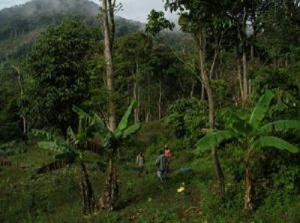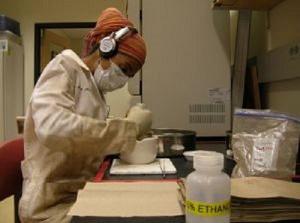Tuyeni Mwampamba
Other projects
26 Oct 2006
Carbon Sequestration in Soils and Biomass of Regenerating Tropical Forests in Tanzania
2 Aug 2010
Evaluating Community Readiness to Participate in Payment for Ecosystems Services Programs in South Nguru Mountains
The overall objective of this project is to determine how historical and ongoing land use affect the tree diversity of returning forests and their ability to sequester and store carbon.

The slash and burn agriculture system that is common to many upland tropical areas results in a landscape mosaic consisting of land that is either in crop production or recovering from cultivation. In the South Nguru Mountains of Tanzania, this agricultural practice has resulted in numerous forest stands of variable age (1 – 50 years old) differentially recovering from subsistence farming. The forests are important to local communities because, while recovering, they continue to provide important wood and non-wood products such as firewood, building poles, fruits and medicinal herbs. The value of these forests can be extended, however, to include their disproportionate ability (compared to primary forests) to sequester carbon, due to the growing trees. Understanding the factors that influence how much carbon can be sequestered and stored in the soils and biomass of regenerating forests is necessary if carbon sequestration is to be considered a means to achieving multiple objectives in the Ngurus, i.e. mitigation of CO2 emissions, biodiversity conservation, promotion of additional ecosystem services, and improving the livelihoods of local communities.

To date, I have surveyed 128 plots in the eastern slopes of South Nguru Mountains for vegetation and soil variables and am presently developing a model that identifies the key factors that govern forest diversity and carbon sequestration in the regenerating forests. The motivation for such a model is to gain better insight into the potential and limitations for carbon offset projects in the area, and to investigate to what extent human-induced variables can be manipulated for the purpose of maximising benefits to multiple stakeholders. Carbon offset projects that incorporate sequestration through regenerating forests (as opposed to plantations) will not only be low cost but they also have a greater potential to extend natural forest cover that can support additional biodiversity. Solutions that are beneficial to the larger conservation goals for the Eastern Arc Mountains, but which also improve local livelihoods through the generation of carbon credits are preferred to those that address these issues independently.